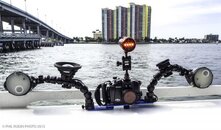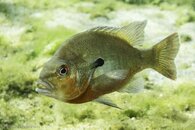Butterball
New
- Messages
- 3
- Reaction score
- 0
Howdy,
I am a novice in search of a housing for a compact point and shoot. I plan to use the housing 12 to 14 days out of a year, I will also invest in a YS-01 strobe, tray/arm, and a compact dedicated video light.
My budget is < $3k for the entire set up. The camera is around $800. Therefore, I am wondering if I should opt for an aluminum housing that cost twice as much as a Fantasea or save the money towards strobe and video light. Also, I may use the housing for an occasional kayak trip.
From my research, the Fantasea housing is somewhat bulkier but lighter in weight and has a positive buoyancy, double o ring seal, built in moisture alarm. The aluminum hosing is twice the weight (2 lbs), slightly lower profile, and allows a 14 degree tilt for my lcd camera display (not sure if this feature even matters).
I appreciate if the someone can chime in regarding my purchase plan.
Regards,
I am a novice in search of a housing for a compact point and shoot. I plan to use the housing 12 to 14 days out of a year, I will also invest in a YS-01 strobe, tray/arm, and a compact dedicated video light.
My budget is < $3k for the entire set up. The camera is around $800. Therefore, I am wondering if I should opt for an aluminum housing that cost twice as much as a Fantasea or save the money towards strobe and video light. Also, I may use the housing for an occasional kayak trip.
From my research, the Fantasea housing is somewhat bulkier but lighter in weight and has a positive buoyancy, double o ring seal, built in moisture alarm. The aluminum hosing is twice the weight (2 lbs), slightly lower profile, and allows a 14 degree tilt for my lcd camera display (not sure if this feature even matters).
I appreciate if the someone can chime in regarding my purchase plan.
Regards,
Last edited:






